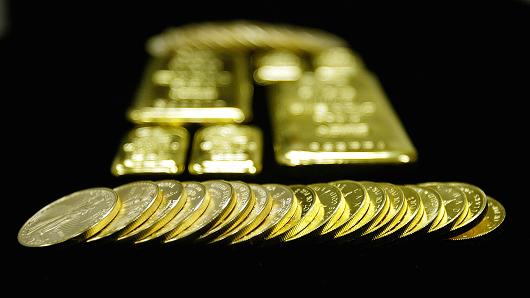The country’s central bank said its gold reserves were 1,658 tonnes (53.31 million fine troy ounces) as of the end of June. In April 2009, reserves were 1,054 tonnes.
The purchases show how China is seeking to diversify its reserves away from the US dollar at a time when the price of gold has fallen to near its lowest price since 2010.
But that task has been complicated by the rapid growth in China’s foreign exchange reserves, which are the world’s largest at over $3 trillion.
At a value of $60.9 billion based on today’s prices China’s gold reserves only make up 1.6 per cent of its total foreign exchange holdings. The world average was just under 10 per cent at the end of 2014, according to Reuters GFMS.
China has been reducing its foreign exchange reserves this year, reporting $3.69tn at the end of June, down from $3.84tn in January.
“Gold has special risk-return characteristic, and at specific times is not a bad investment,” the People’s Bank of China said on its website.
“But the capacity of the gold market is small compared with China’s foreign exchange reserves, if foreign exchange reserves were used to buy large amounts of gold in a short amount of time, it will easily affect the market.
The 604 tonnes increase did not exceed analyst estimates and the price of gold was unmoved on the news.
“If you like gold the fact they bought it it’s a good thing but it’s not bullish in terms of the scale,” said Leon Westgate, an analyst at ICBC Standard Bank.
Still, the data means China has now overtaken Russia as the sixth largest holder of gold in the world, after the US, Germany, the International Monetary Fund, Italy and France, according to the World Gold Council. The US has gold reserves of 8,133 tonnes.
China does not regularly release data on its gold reserves. Before China’s last announcement in 2009, there were only two other announcements of changes to its gold reserves over the past 15 years, according to UBS.
It is possible the gold announcement is a “one-off transparency gesture” as the IMF concludes talks this year about inclusion of its currency in its Special Drawing Rights (SDR), the IMF created currency, UBS said.
China is actively seeking the IMF’s endorsement of the renminbi as an official reserve currency, a designation that requires a currency to be “freely usable”.
Gold rose to a historical peak of $1,921.17 a troy ounce in 2011 before falling sharply to trade at $1,136 today.
“Gold is the same as other commodities and financial assets, the global gold price rises and goes down,” the PBoC said.
“Based on our analysis on gold’s value and price changes, and on the premise of not creating disturbances in the market, we steadily accumulated gold reserves through a number of international and domestic channels.”
China’s purchases were made via assorted domestic refineries, production stockpiles and through trading on domestic and international exchanges, it said.
http://www.cnbc.com/ ( from the FINANCIAL TIMES)
photo by Getty Images

